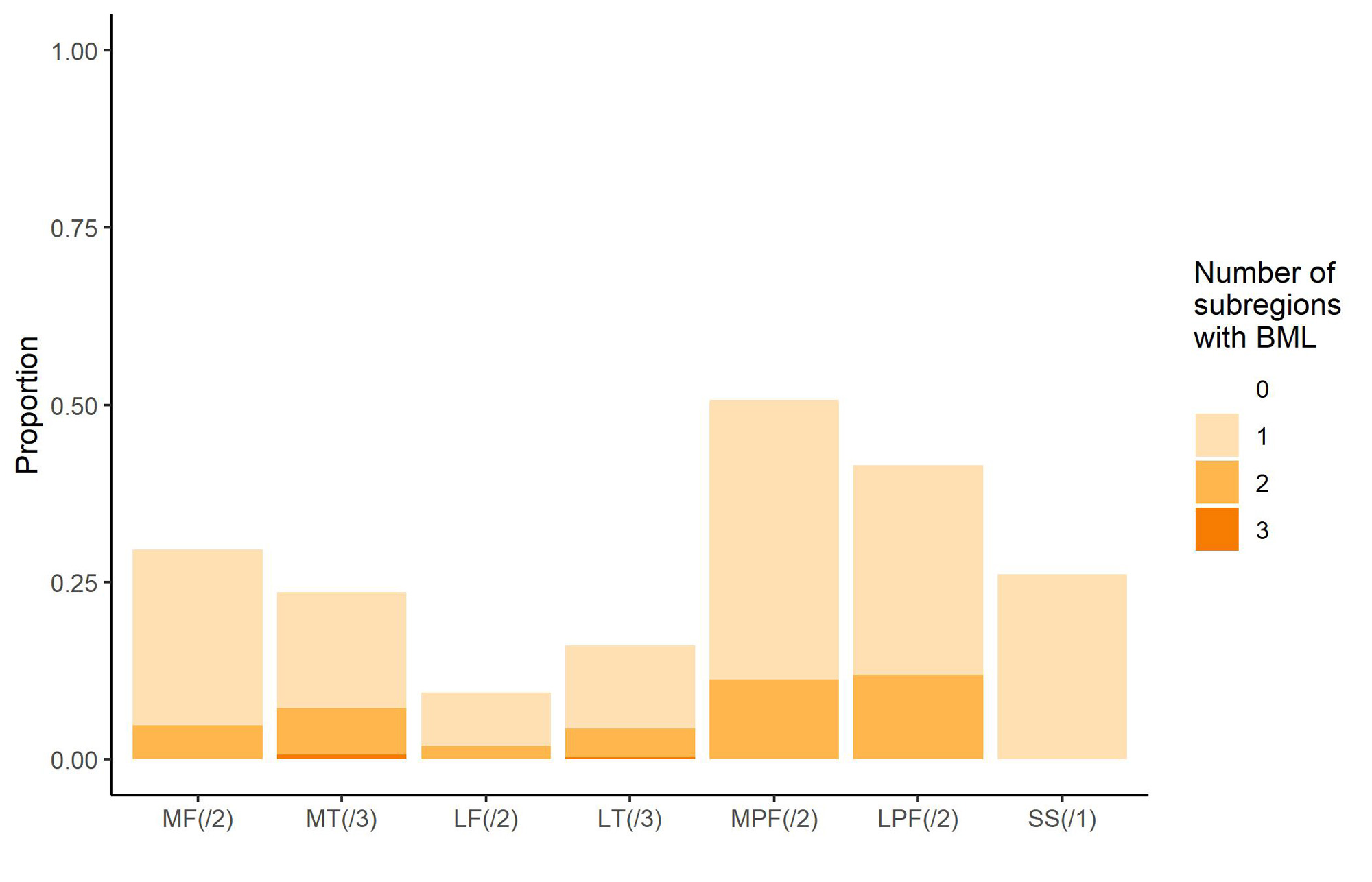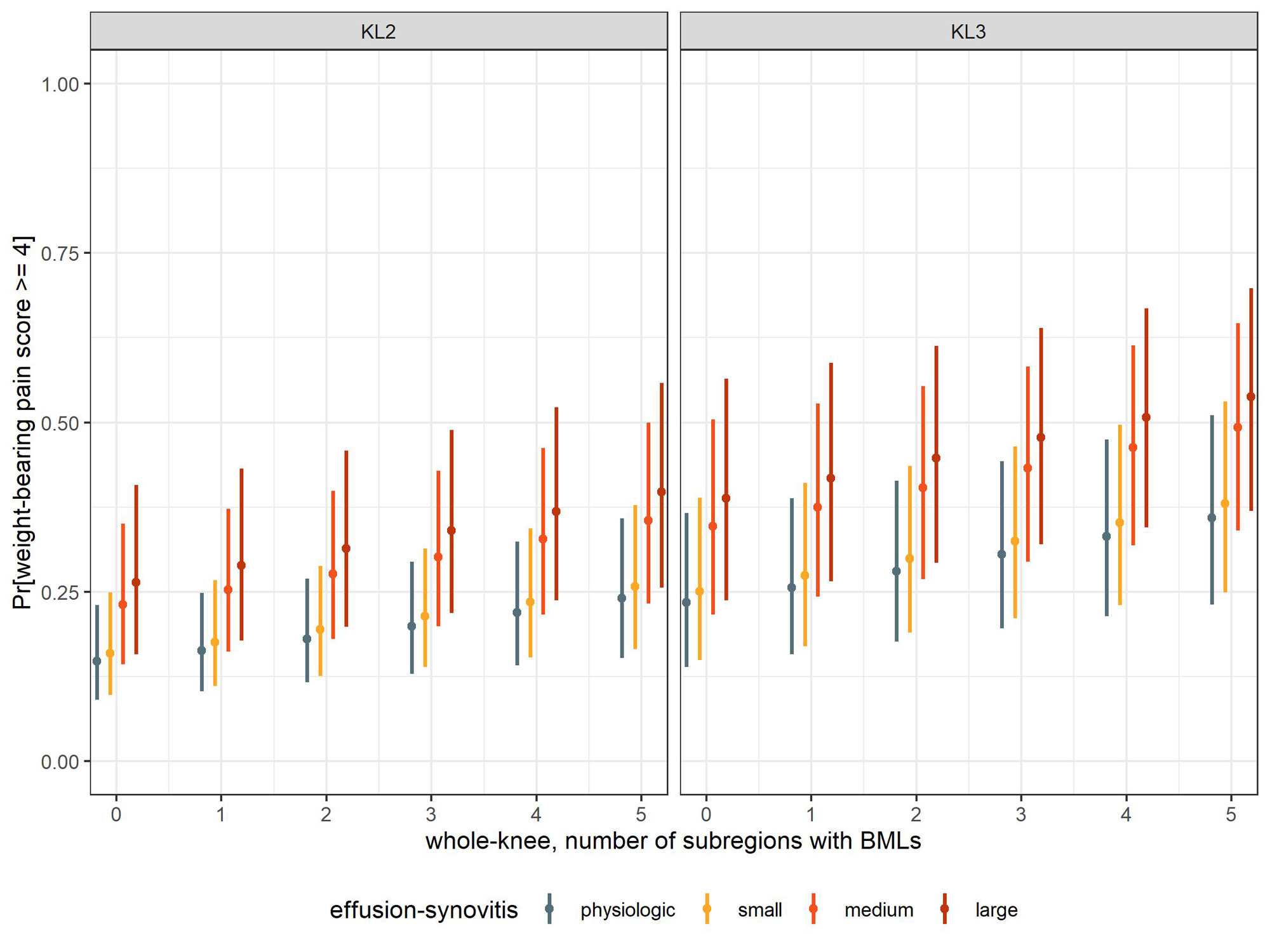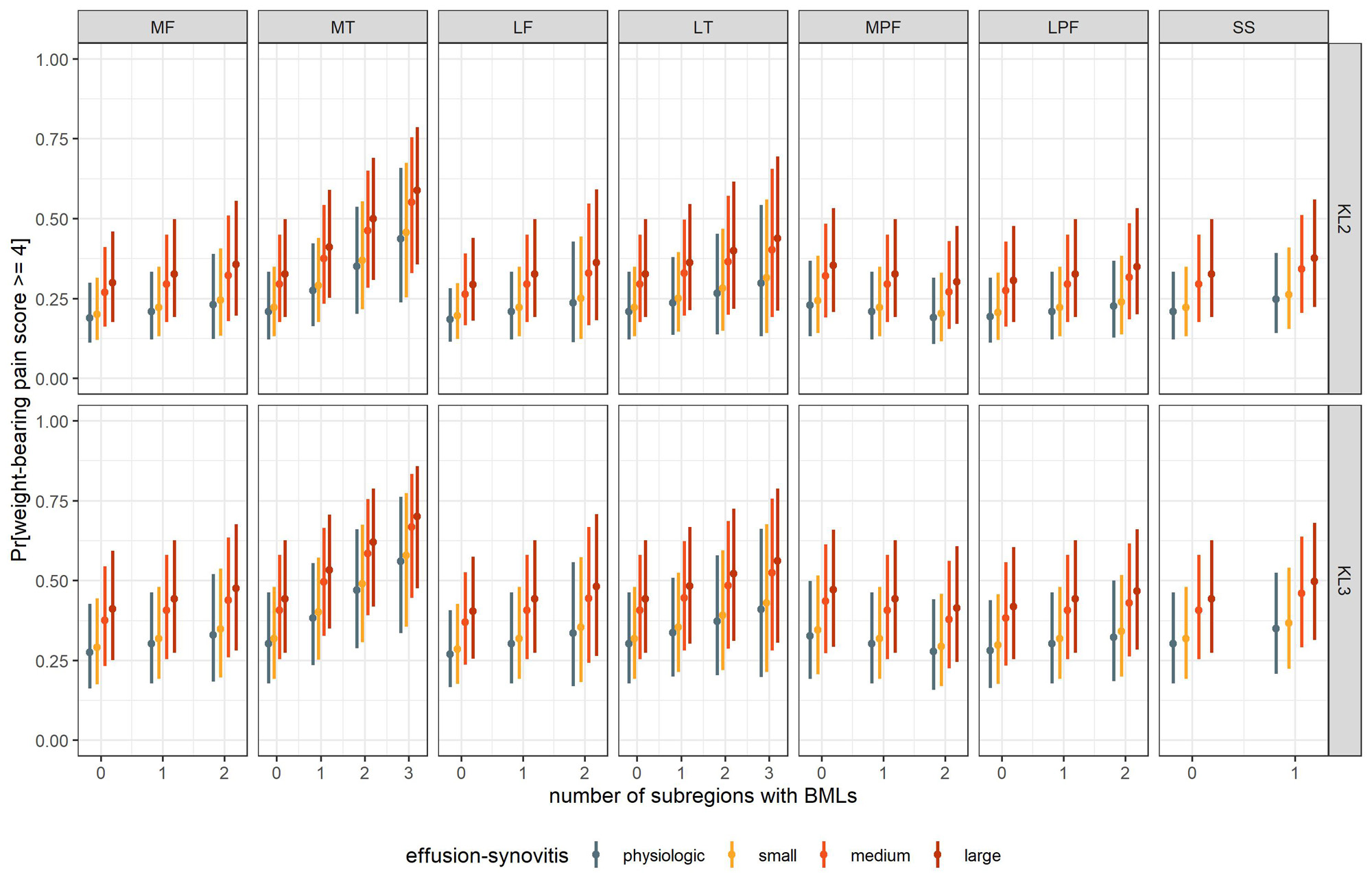Session Information
Session Type: Poster Session B
Session Time: 9:00AM-11:00AM
Background/Purpose: Subchondral bone marrow lesions (BMLs) have been associated with incident and progressive pain and reported to fluctuate along with concurrent fluctuations in symptoms. While associated with other structural, cellular, and biochemical features of OA that cause pain, BMLs may contribute directly to OA pain via cytokines, NGF, and altered biomechanics in knee OA, though evidence surrounding the role of BMLs and weight-bearing pain, specifically, is limited. Our objective was to estimate the effect of BML involvement on weight-bearing knee pain following radiographic KOA development, across the whole knee and by bone plate.
Methods: The OAI is a longitudinal observational study of participants with or at risk of symptomatic KOA. We identified incident cases of radiographic KOA, defined as KLG 2 or 3 on centrally graded x-rays. Participants underwent bilateral posteroanterior fixed-flexion weight-bearing knee radiography and non-contrast 3T MRI over 10 years of follow-up. MSK radiologists graded BMLs, effusion-synovitis (ES), Hoffa-synovitis (HS), cartilage and meniscal damage using the MRI Osteoarthritis Knee Score (MOAKS). BML involvement was assessed in 15 subregions (Figure 1). The WOMAC questionnaire includes pain assessment during 3 weight-bearing activities: walking on a flat surface, going up/down stairs, and standing, rated as none (0), mild (1), moderate (2), severe (3), or extreme (4). The weight-bearing knee pain score was defined as the sum of reported pain scores during these activities (0-12). We fit a proportional odds logistic regression to model weight-bearing knee pain using penalized maximum likelihood estimation; predictors included the number of subregions with BML involvement, other structural damage scores, KLG, age, and BMI at the same clinic visit, as well as sex and race. We similarly fit a model with the number of subregions with BML involvement at the bone-plate level. Models were compared with and without the number of subregions with BML involvement using a likelihood ratio test (LRT). The predicted probability of weight-bearing pain score 4 or greater is reported with nonparametric bootstrap 95% confidence intervals with cluster sampling at the participant-level.
Results: We identified 690 knees contributed by 623 participants with radiographic KOA (i.e., KL2 or KL3 at the time of MRI). The mean participant age was 65 years (SD 9), mean BMI was 29.3 (SD 4.8), 66% reported female sex, and 83% self-identified as white.The prevalence of BML involvement in our sample is shown for each bone plate (Figure 1). Predicted probability of weight-bearing pain is reported based on BML involvement, ES, and KLG, from fully adjusted models (Figures 2-3). The number of subregions in the whole knee with BML involvement was associated with weight-bearing pain (LRT p=0.006). The model that included affected subregions in each bone plate implicated BML involvement in the MT (LRT p=0.002).
Conclusion: Our findings suggest that the probability of weight-bearing knee pain increases with increasing subregional involvement of BMLs, largely driven by MT BMLs.
medial femur (MF) [FemCentMed, FemPostMed]; medial tibia (MT) [TibAntMed, TibCentMed, TibPostMed]; lateral femur (LF) [FemCentLat, FemPostLat]; lateral tibia (LT) [TibAntLat, TibCentLat, TibPostLat]; medial patellofemoral (MPF) [FemAntMed, PatellaMed]; lateral patellofemoral (LPF) [FemAntLat, PatellaLat]; subspinous (SS) [TibSubSpCent]
To cite this abstract in AMA style:
Kwoh K, Roemer F, Ashbeck E, Guermazi A. Extent of Subregional Involvement of Subchondral Bone Marrow Lesions in Incident Knee OA Is Associated with Weight-Bearing Knee Pain [abstract]. Arthritis Rheumatol. 2023; 75 (suppl 9). https://acrabstracts.org/abstract/extent-of-subregional-involvement-of-subchondral-bone-marrow-lesions-in-incident-knee-oa-is-associated-with-weight-bearing-knee-pain/. Accessed .« Back to ACR Convergence 2023
ACR Meeting Abstracts - https://acrabstracts.org/abstract/extent-of-subregional-involvement-of-subchondral-bone-marrow-lesions-in-incident-knee-oa-is-associated-with-weight-bearing-knee-pain/



